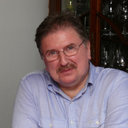Activation of coagulation during alimentary lipemia under real-life conditions.
Paraules clau
Resum
High intake of saturated fat is a predictor of coronary heart disease mortality. The phenomenon of postprandial angina pectoris has been described many years ago. Although earlier studies have demonstrated postprandial activation of coagulation factors VII and XII, platelets and monocytes, conclusive evidence for intravascular fibrin formation after a fat-rich meal has not been reported yet. The present study included 33 healthy physicians (7 females, 26 males) with a mean age of 42 years (range 27-62 years), and 27 coronary heart disease patients (8 females, 19 males) with a mean age of 63 years (range 47-81 years). Of the coronary heart disease patients, 26/27 were treated with acetylsalicylic acid and 25/27 with lipid-lowering drugs simvastatin or atorvastatin. Blood samples were drawn 30-60 min before and 30-60 min after a dinner consisting of rye bread with liversausage and black pudding as hors d'oeuvre, lettuce with smoked bacon in a lard dressing, stuffed fried goose with red cabbage, potato dumplings and sweet chestnuts, and white and brown mousse au chocolat. Average intake per person was 3760 kcal, with 125.9 g protein, 238.0 g fat and 268.9 g carbohydrate. We measured a significant postprandial increase in fibrinopeptide A (FpA) levels from 1.14+/-1.23 microg/l to 4.18+/-2.86 microg/l (p<0.0001) in healthy probands, and 4.66+/-13.61 microg/l to 12.80+/-15.04 microg/l (p<0.0001) in coronary heart disease patients. Triglycerides increased from 137.6+/-60.5 to 201.5+/-75.0 mg/dl in healthy probands and from 211.9+/-94.6 to 273.6+/-122.5 mg/dl in coronary heart disease patients. Fat-rich meals may cause procoagulant episodes, which may promote vascular complications such as myocardial infarction, transient ischemia attacks in susceptible persons.




